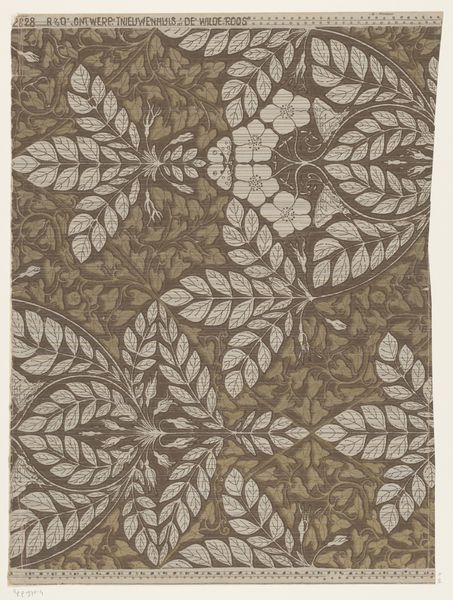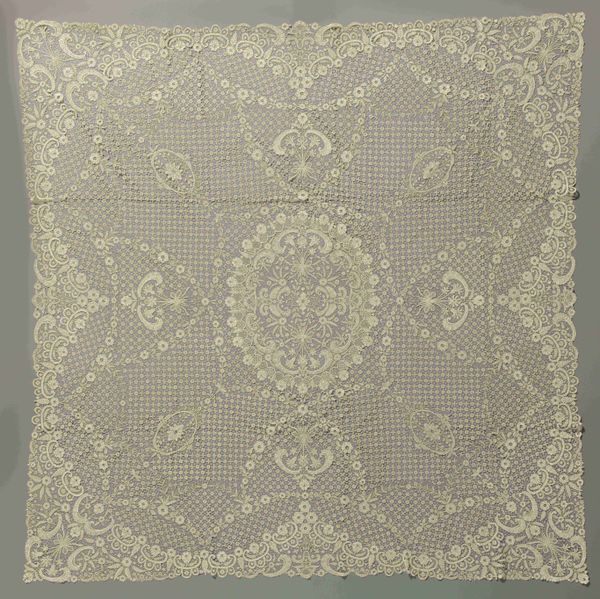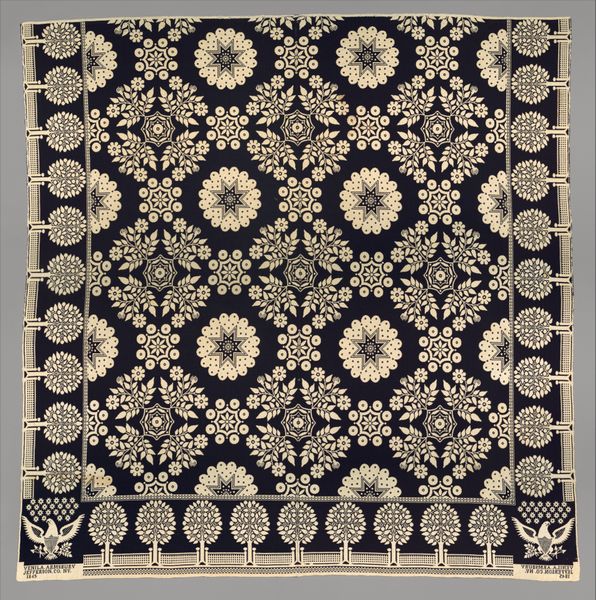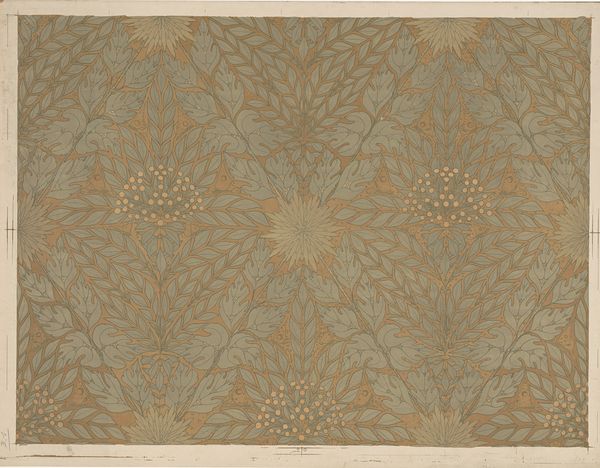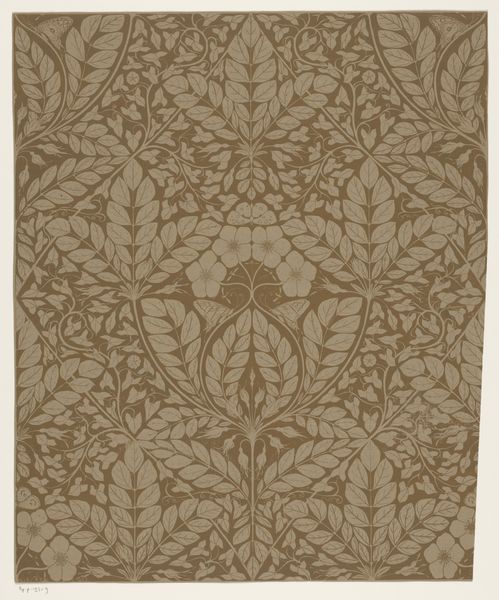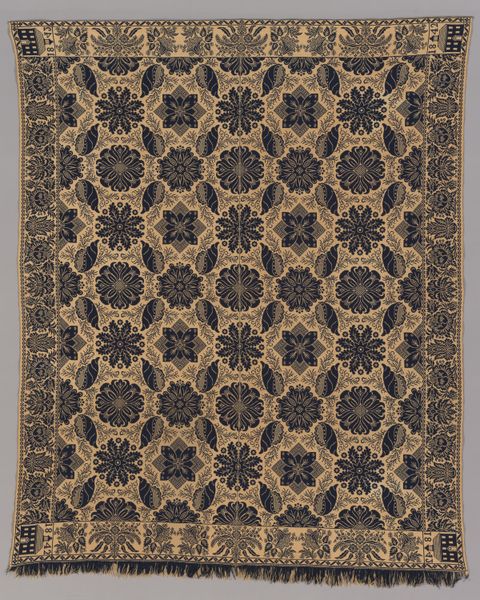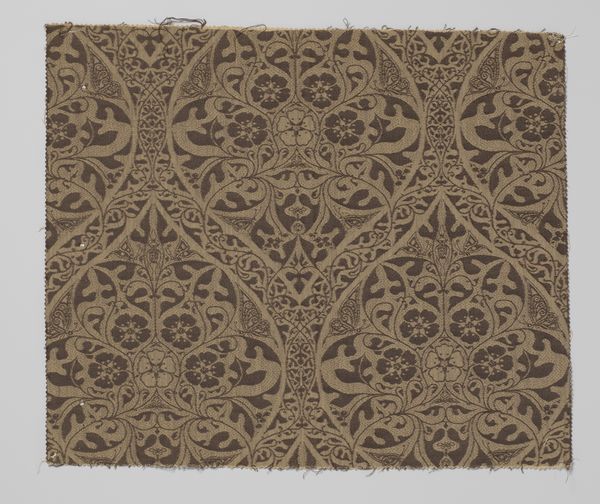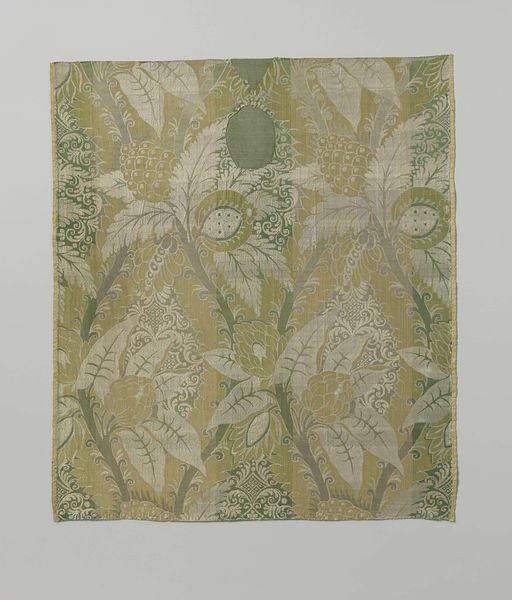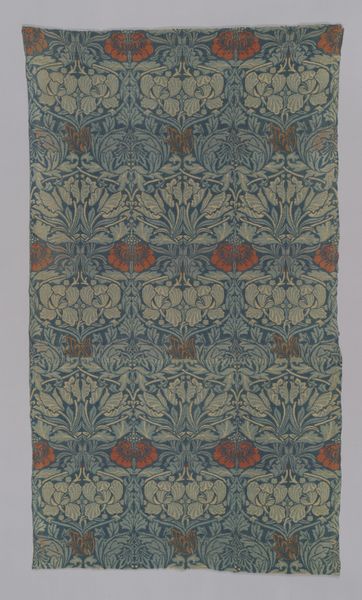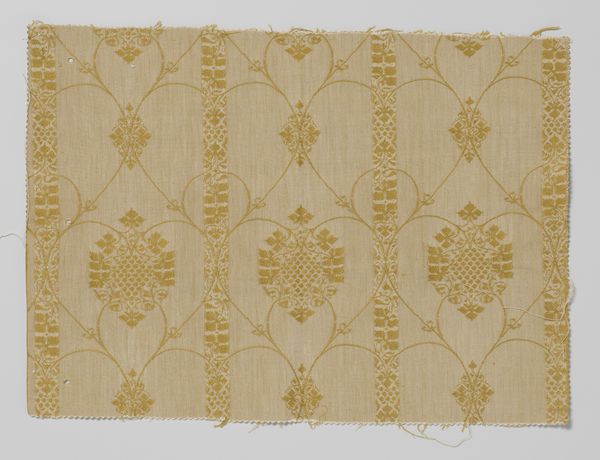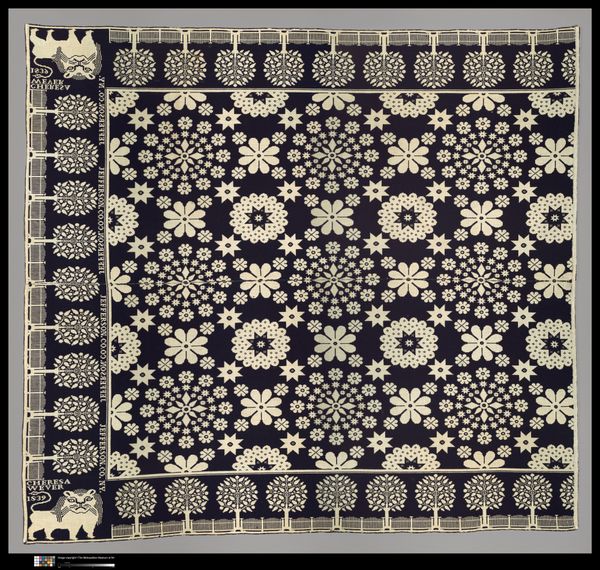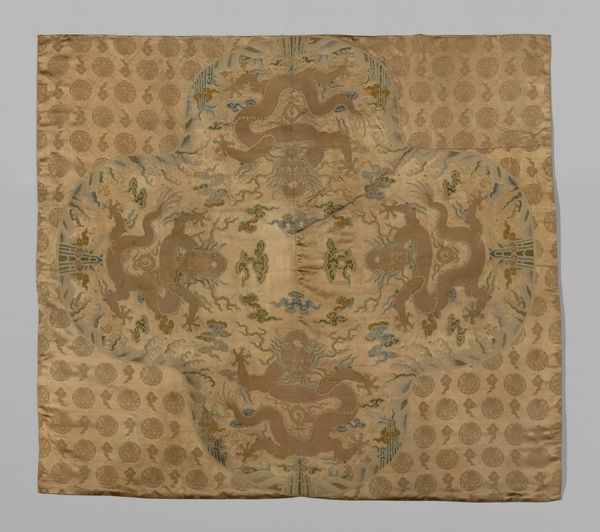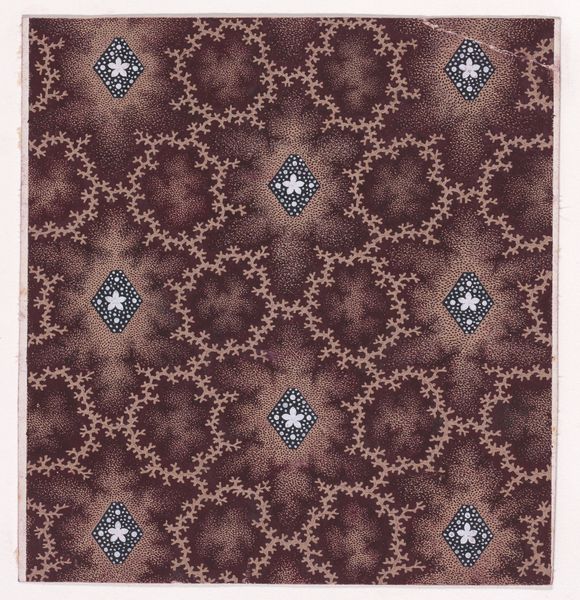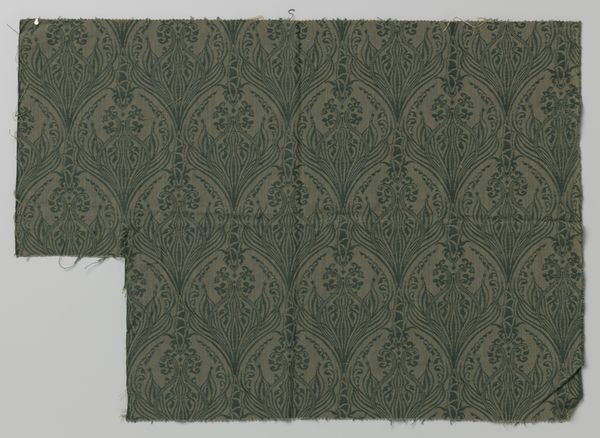
Fragment van bespanningsstof met patroon van zonnebloem en vlinders binnen spitsovalen c. 1909 - 1924
0:00
0:00
theonieuwenhuis
Rijksmuseum
weaving, textile
#
natural stone pattern
#
naturalistic pattern
#
organic
#
art-nouveau
#
pattern
#
weaving
#
textile
#
repetitive shape and pattern
#
organic pattern
#
repetition of pattern
#
intricate pattern
#
regular pattern
#
pattern repetition
#
decorative-art
#
imprinted textile
#
layered pattern
Dimensions: height 39.0 cm, width 46.0 cm
Copyright: Rijks Museum: Open Domain
Curator: Here we have a fragment of patterned fabric from the Rijksmuseum, believed to be created by Theo Nieuwenhuis sometime between 1909 and 1924. The textile showcases a repeating motif of sunflowers and butterflies enclosed within pointed ovals. Editor: My first impression is of something muted, almost melancholic, despite the vibrant life it depicts. The restricted palette of browns and creams gives it a sedate elegance. Curator: Yes, that restrained palette is typical of the Art Nouveau period. The piece speaks to the prevailing aesthetic of the era and a reverence for organic forms within a society rapidly industrializing. Note the tension between the hand-crafted nature of the weaving and the mechanization of textile production. Editor: The tension you describe becomes palpable when analyzing the individual shapes—the symmetry is pleasing, even soothing, yet there is also subtle variation in the weave. What does this slight asymmetry infer about the means and techniques used to produce the fabric? Curator: Exactly. The imperfections suggest a production process not fully divorced from human labor. Nieuwenhuis, like many designers of the time, sought to elevate craft to the level of fine art, responding to the mass production already changing lives. Think about the implications of this kind of decorative textile in shaping a domestic interior; it allowed for wider participation in refined design. Editor: Let’s explore that point further: the sunflower and butterfly motifs...are these simply decorative, or do they function symbolically? Is there a specific semiotic structure being proposed to those who engage with the image? Curator: Absolutely, we see both the sunflower representing adoration and longevity alongside the butterfly, a powerful symbol of transformation and renewal, suggesting a desire to inspire hope in everyday life. The labor of creating such a textile and then integrating it into one's environment speaks volumes. Editor: Considering its composition, the work resonates with subtle sophistication; I am now feeling rather cheerful toward it, its gentle colouration has opened me up to it’s design elements that have been a pleasure to interpret. Curator: Indeed, it’s a simple remnant but rich with layered implications about its maker, the consumer, and a society in transition.
Comments
No comments
Be the first to comment and join the conversation on the ultimate creative platform.
